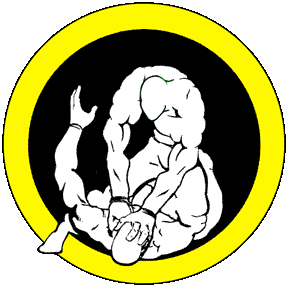The Onion Picker: Carmen Basilio and Boxing in the 1950s; Gary B. Youmans; Syracuse University Press; 2007 (Book Review)
Posted on | July 1, 2009 | No Comments

By: Patrick McElligott:


Several years ago, I wrote a book on the contributions of the immigrant Irish families to the culture in upstate New York. One evening, after a presentation to a area historical society, a woman approached me and said, “You didn’t include enough about the Italians.” She proceeded to tell me about her family’s history. I mentioned to her that early in the book, I had noted that the stories of the Irish and Italian immigrants were closely related. Before I could finish, she said, “That’s just not enough,” and walked away. One of my friends, who has published several books, started laughing. “Write a history book,” he said, “and people will let you know how little you really know.”
Perhaps that experience has influenced the manner in which I want to review some of the best books on boxing, for this forum. There are few, if any, books on boxing history that are 100% accurate ….even the Ring Record Book has errors. Yet it takes remarkably little talent to focus on the negative. My aim in this series is to encourage people to read and enjoy some of the valuable books that help to document the history of the sport, and which offer insights on some of the most interesting boxers.
Gary Youmans’ book about the career of Carmen Basilio is a great place to start. The author, who grew up in Syracuse, NY, is a sports marketing consultant. He played basketball in college, and went on to coach at the high school level in Florida, and at the professional level in Canada. He has published two books on football history. It makes sense that someone with a love of sports’ history, coming from Syracuse, would write a biography of Carmen Basilio.
“The Onion Picker” has 15 chapters, each one a round in Carmen’s rise from a tough farm kid in rural, upstate New York, to the welterweight and middleweight champion of the world. The author includes information from the newspapers and boxing magazines of the day, as well as interviews with those closest to Carmen. Youmans covers both the yin and yang of boxing: there are the shadowy figures, intent upon profiting financially by controlling the titles, and the honest, hard-working people – like Carmen – who aren’t looking for any favors or unfair advantages. They just want to compete on a level playing field.
Boxing, of course, has had its share of corruption. The pages of this book show how the theft of the decision, and title, in his March 14, 1956 defense against Johnny Saxton outraged Basilio. It also provides interesting coverage of his most important fights, against tough Tony DeMarco and the great Sugar Ray Robinson.
A review in one boxing magazine noted that this book is incomplete, and leaves room for others on Basilio. I disagree with the “it’s just not enough” attitude. I do not think that any one book could possibly tell the complete story of a great boxing champion. As my son Darren said to me, a good biography involves the author’s interpretation of what is most important in the subject’s life, and there are as many impressions of Basilio as there are boxing fans who have watched his fights, especially from those who have had the opportunity to meet Carmen in person.
By no small coincidence, Carmen Basilio’s boxing career is a topic mentioned in my book on the Irish in upstate NY. As Youmans notes in his book, Carmen’s father worked on the railroad for a period of time. He was a boxing fan, who liked Jimmy Braddock. One of his friends on the railroad was my great uncle, who at times helped train Braddock and others, after his own career in the ring ended. My extended family has numerous photos of Carmen at their Sherburne home, throughout his career.
I’ll share a personal story here, in this book review. In 1975, the first annual “Southern Tier Boxing Tournament” was held at Broome County Community College in Binghamton. This was in part, due to differences between local trainers and some promoters in other areas, over “robberies” in the decisions at the regional Golden Gloves. The promoters brought in Carmen as a “guest referee,” although he did not end up as ref in any of the fights.
In the finals, I fought a tough kid, but I handled him with ease. I knocked him through the ropes once (Rubin’s advice on setting an opponent up worked!), and sent his mouthpiece three rows back another time. When it came time for the decision, we knew that something was up, because the referee was arguing “that’s not fair, you can’t do this.” But they did – the decision went to the other fellow – perhaps because his father was an influential businessman in Binghamton. My opponent was gracious: he told me in the ring that he knew I won, and offered me the first place trophy. But I had something more valuable.
Carmen Basilio walked up to the ring, and was shaking his head, saying, “No, no. This kid won the fight.” He knew what it meant to get ripped off. It was one of my proudest moments in the ring.
At the end of his 15-round book, Youmans includes a brief interview with Carmen. He asks why people loved watching him fight. “When people buy a fight ticket,” Basilio answered, “they’re paying to see blood and knockdowns. Every time I go into the ring, I expect to be busted up. It is as much a part of the business as the boxing gloves. There is no room in the ring for two fighters, a referee, and pity. It’s him or me.” That is just what you expect from Carmen Basilio, the welterweight and middleweight champion of the world. And this book delivers. I give it an A+.



